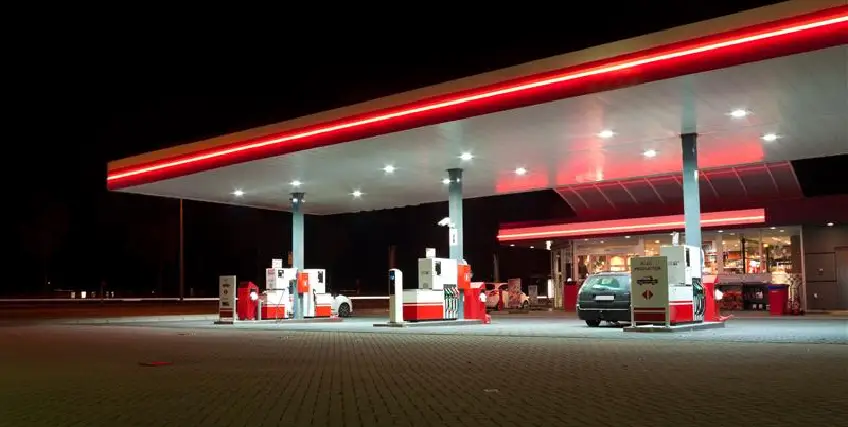How to Budget for the Cost of Employee Turnover for a Gas Station
March 21, 2025 | Last Updated on: March 21, 2025

One of the biggest factors affecting your small business’ bottom line or profitability is high employee turnover. Even though it significantly impacts all the businesses across various industries, the cost of employee turnover is often overlooked by a lot of business owners. Employee turnover includes indirect and direct costs related to recruiting, onboarding, training new hires, and managing decreased productivity during transitions. These costs are often neglected or underestimated as they might not provide immediate result. Over the years, it has been observed that replacing an employee can cost between 50% to 200% of their annual salary, depending on their role and industry. With turnover rates remaining substantial in the recent years, understanding and budgeting for these expenses, alongside implementing effective employee retention strategies, is important for small business sustainability.
In this article, we will discuss how gas station owners can budget effectively for high employee turnover rates and explore the importance of:
- Understanding the cost of employee turnover
- Revisiting business budgets
- Exploring financing options
- Tracking key business metrics
- Using incentives to improve employee retention
- Being proactive in hiring and retention efforts
- Examining average employee turnover cost by industry
Understanding the Cost of Employee Turnover
Typically, when an employee leaves, the cost to replace any of them is about one-third of their annual salary or it can even go up to six to nine months of their average salary. and this expense does dent the budget significantly. Without a talent pipeline, recruiting new employees' costs both time and money.
Why Does Turnover Cost So Much?
The costs of replacing an employee include advertising job openings, attending job fairs, using external recruitment services, and pre-employment screenings. Then, there are the costs we scarce remember to budget for. Think of signing or holiday bonuses? Does your business have any relocation costs? These can all be additional costs to be considered.
Training a new hire is another expense, consuming both time and productivity. While new employees learn the job, colleagues may need to take on extra tasks, reducing efficiency and it is important that training costs be kept in mind while creating a budget.
Finally, turnover can cause indirect financial losses. A long checkout line at a gas station may drive customers away, and unanswered phone calls due to staff shortages may result in lost business opportunities.
Revisiting Your Budget to Manage Turnover Costs
If you haven't created a budget for your small business yet, now is the time. A well-planned budget should account for previous year's numbers while considering the financial effects of an employee’s leaving the organization.
Budgets should include:
- Fixed costs (e.g., salaries, rent)
- Variable costs (e.g., inventory)
- One-off capital expenses
While allocating funds to extra purchases, you need to be careful as more money may be needed to cover employee turnover costs. You should track monthly net income too as it will help in identifying financial trends and help you make necessary adjustments if needed. Try to get advice from an expert financial consultant to get more clarity on budgeting for average cost of turnover per employee and general business expenses.
Exploring Financing Options
You need to consider the financial impact of an employee’s resignation when projecting future expenses. Truth to be told, the cost of employee turnover may require additional funding if proper budgeting has not been made. Business owners can explore financing options to maintain stability, including:
- Small Business Administration (SBA) 504 and 7(a) loans
- Business credit cards
- Term loans
By securing financial assistance, businesses can ensure they have the necessary funds to cover cost of hiring and retention.
Tracking Employee Turnover Metrics
You cannot predict if and when an employee is going to put down their papers. However, you can take steps to improve employee retention. To understand how much money you need to set aside for hiring, you can calculate turnover rate. The formula:
(Number of employees who left during a set period) / (Total number of employees at the start of that period) x 100
Understanding average employee turnover cost by industry can help businesses in different sectors compare their rates to competitors and strategize accordingly. Also, if you are the sole proprietor of your gas station, it helps you estimate the cost of employee turnover and the amount of money you need to put aside.
Retention Strategies to Lower Turnover Costs
It is a fact that employee retention tends to reduce the need for frequent hiring and lowers the average cost of employee turnover. Competitive wages and benefits improve job satisfaction. As of 2025, the mean hourly wage for a gas station attendant in the U.S. is $17, with an annual salary of approximately $41,000. So, offering higher hourly wages can be a way to retain the top talent. However, if offering above-average wages isn't in the cards, alternative incentives can be attractive too, such as:
- Performance bonuses
- Growth opportunities
- Health and wellness programs
These perks help increase job satisfaction while keeping costs manageable.
Incentives to Reduce Turnover Costs
Offering employee benefits can boost retention. Common perks for gas station attendants include:
- Employee discounts
- Flexible scheduling
- Paid sick time and time off
- Commuter assistance
- Employee assistance programs (EAPs)
Although investing in incentives involves additional costs, it ultimately reduces cost of employee turnover in the long run. After all, the best way to prepare for employee turnover is to prevent turnover altogether.
Proactive Hiring and Retention Strategies
Gone are the days when employees would take any kind of undue work pressure. A poor company culture can negatively impact a person’s wellbeing. It can also significantly impact the company’s bottom line, leading to low productivity, poor employee experience, low employee morale and high turnover. So, it has become important that businesses create a positive work culture so as to reduce the cost of employee turnover in the future. Businesses can reduce turnover costs by improving hiring processes and retention strategies to reduce the number of departing employees. Implementing structured group interviews, mentorship programs, and talent pipelines streamlines hiring. Employee recognition programs further enhance retention and reduce cost of employee turnover on an average. Here are a few points that entrepreneurs can do to ensure they have a positive work environment:
- Recognize employees through initiatives like "Employee of the Month"
- Improve onboarding with mentorship programs
- Use structured interviews to streamline hiring
- Develop a talent pipeline from past applicants for future hiring needs
By investing in proactive strategies, businesses can lower average cost of employee turnover and maintain operational efficiency.
Conclusion
Budgeting for cost of employee turnover requires a mix of a few things such as prioritizing retention in budgeting, exploring financing options and implementing proactive hiring and employee engagement strategies. It is important to keep an open dialogue with your employees. A transparent workplace fosters trust and reduces turnover, benefiting both employees and the business.
Frequently Asked Questions on Cost of Employee Turnover
What is the cost of employee turnover?
The cost of employee turnover encompasses expenses related to recruiting, hiring, training new employees, and the loss of productivity during the transition period. According to Gallup, replacing an individual employee can cost from one-half to two times the employee's annual salary.
How does the average cost of turnover per employee impact small businesses?
For small businesses, the average cost of turnover per employee can be particularly burdensome. These costs include direct expenses like advertising for new positions and indirect costs such as lost productivity. High turnover rates can strain limited resources, making retention strategies crucial for small business sustainability.
What factors contribute to the average cost of employee turnover?
The average cost of employee turnover includes several factors:
- Recruitment Costs: Expenses for job postings and recruiter fees.
- Onboarding Process and Training: Time and resources spent to integrate new hires.
- Lost Productivity: Time taken for new employees to reach full productivity.
These combined factors can significantly impact a company's bottom line.
How does the average employee turnover cost by industry vary?
The average employee turnover cost by industry varies significantly. For instance, industries like hospitality and retail often experience higher turnover rates, leading to increased costs. Conversely, sectors such as education and government tend to have lower turnover rates, resulting in reduced expenses related to employee turnover.
What strategies can reduce the cost of employee turnover?
To mitigate the cost of employee turnover, companies can implement several strategies:
- Offer Competitive Salaries: Ensuring compensation aligns with industry standards.
- Provide Career Development: Opportunities for advancement to increase employee satisfaction.
- Enhance Work-Life Balance: Flexible schedules and remote work options to improve retention.
Implementing these strategies can lead to higher employee retention and reduced turnover costs.




